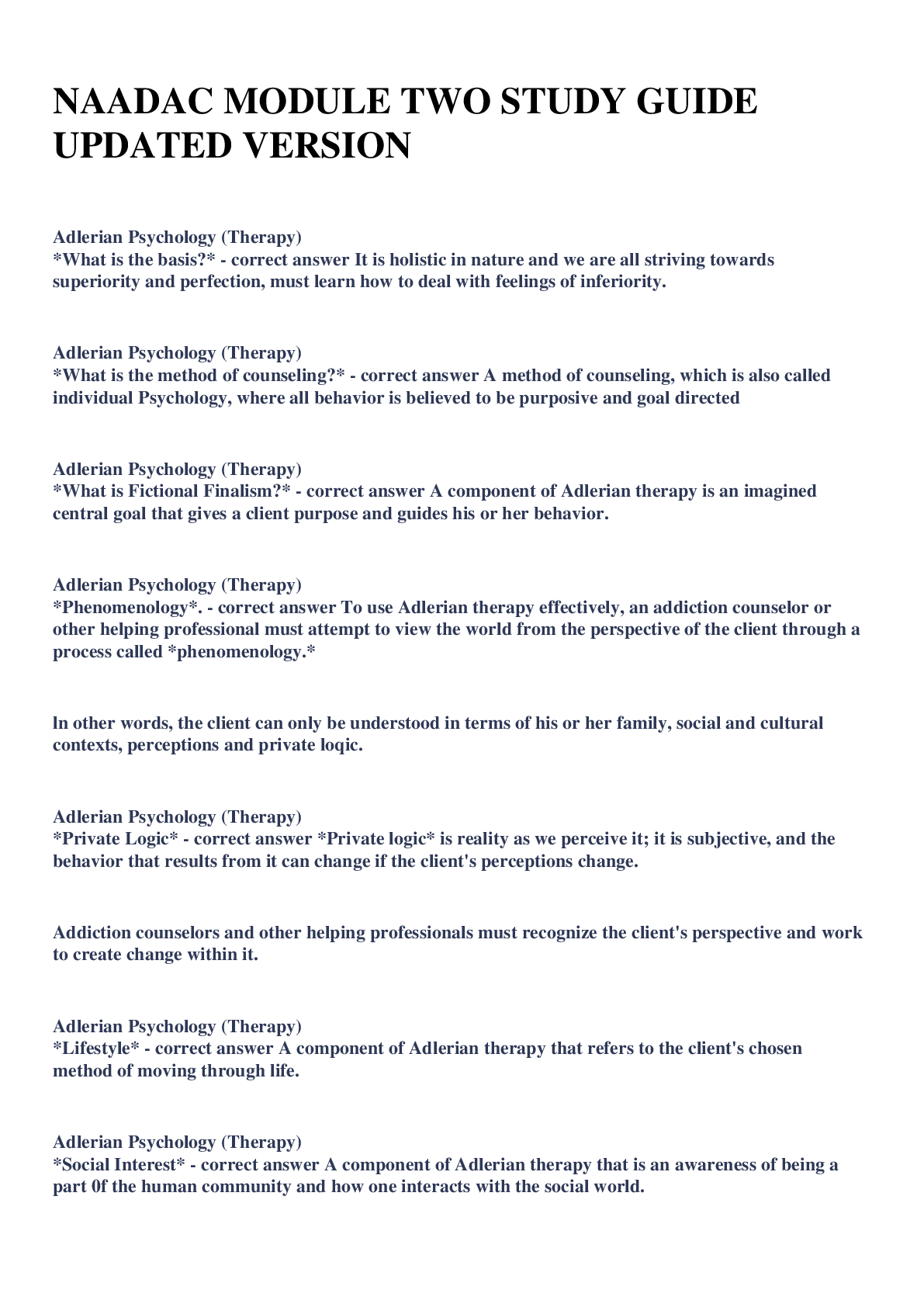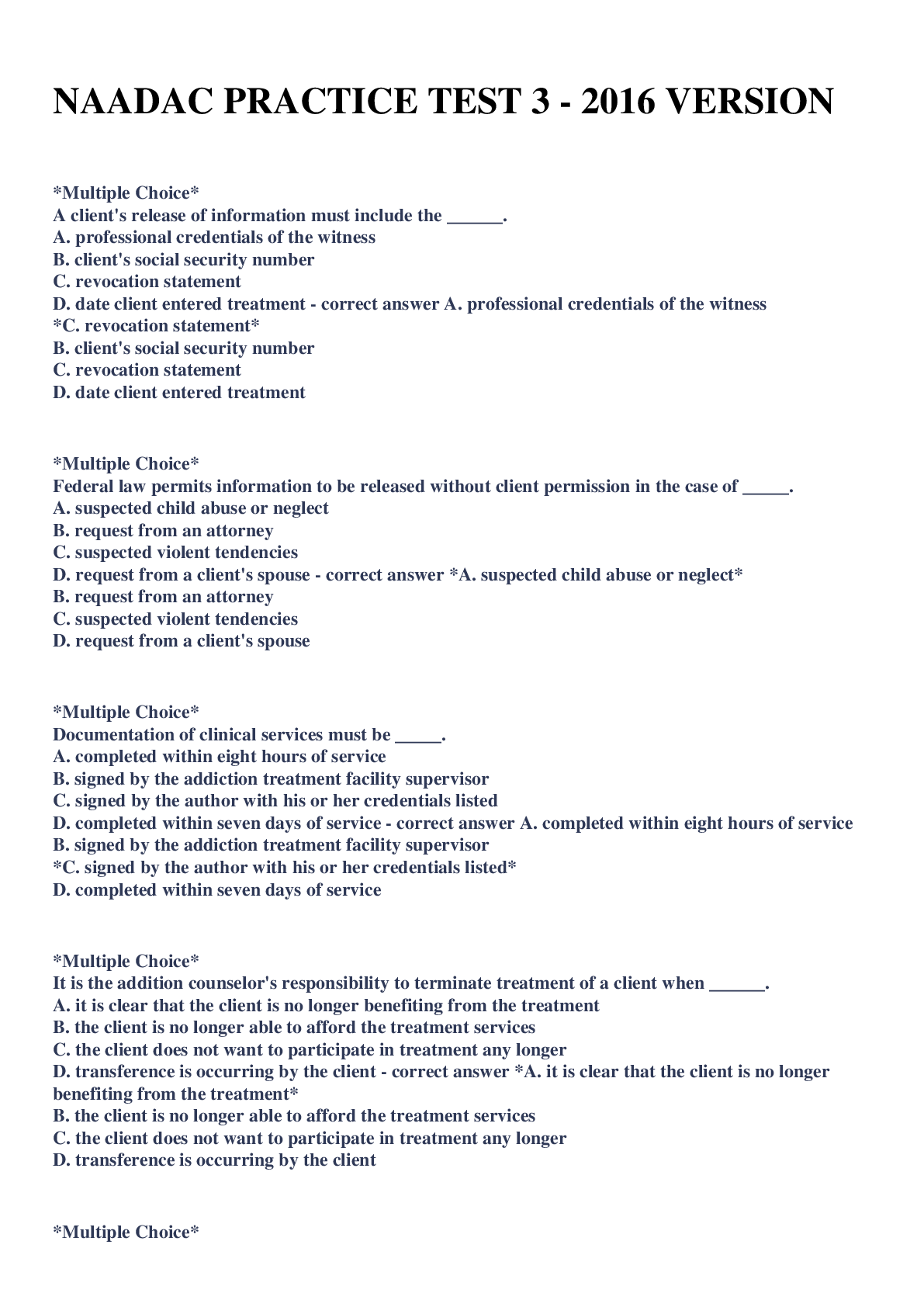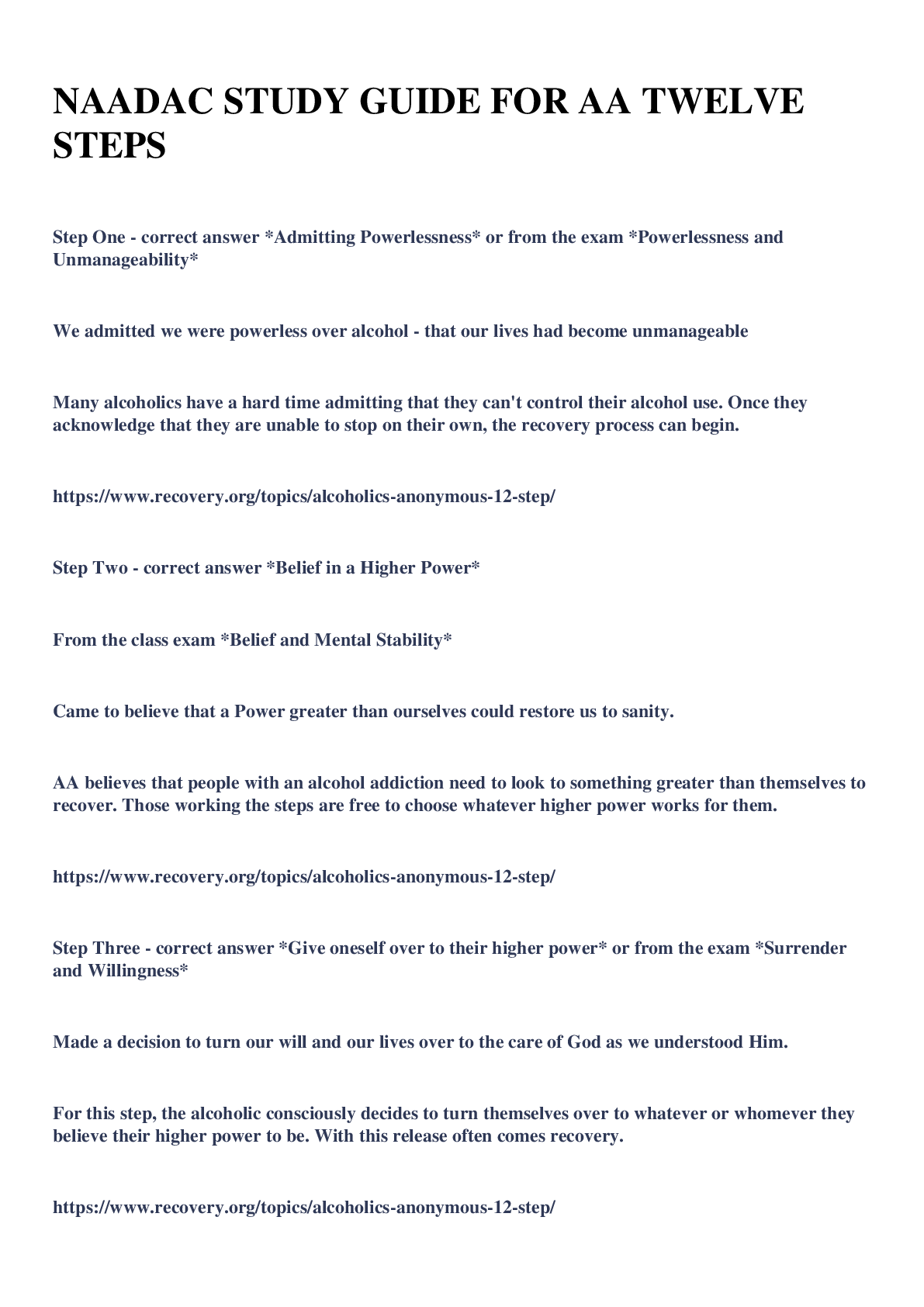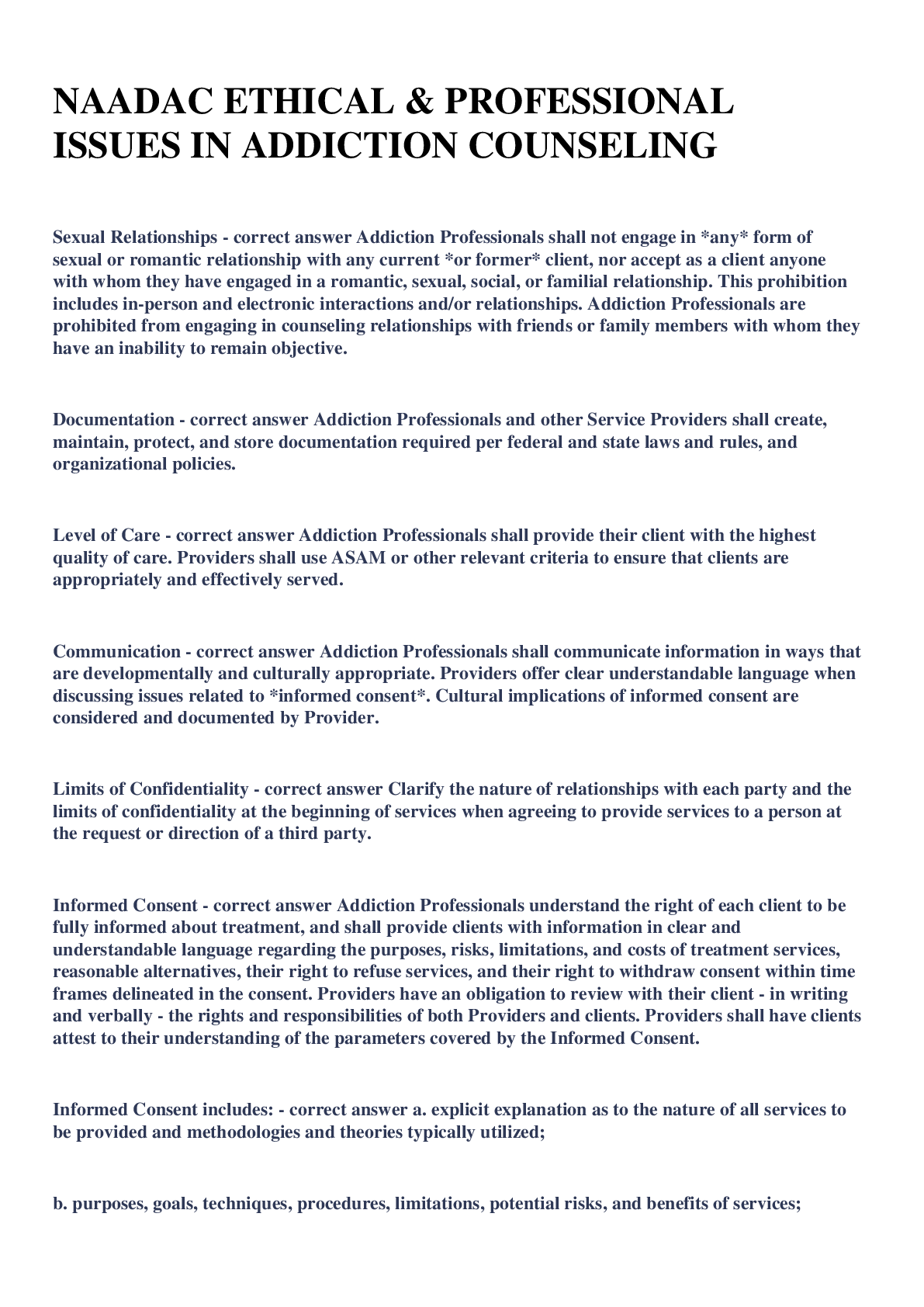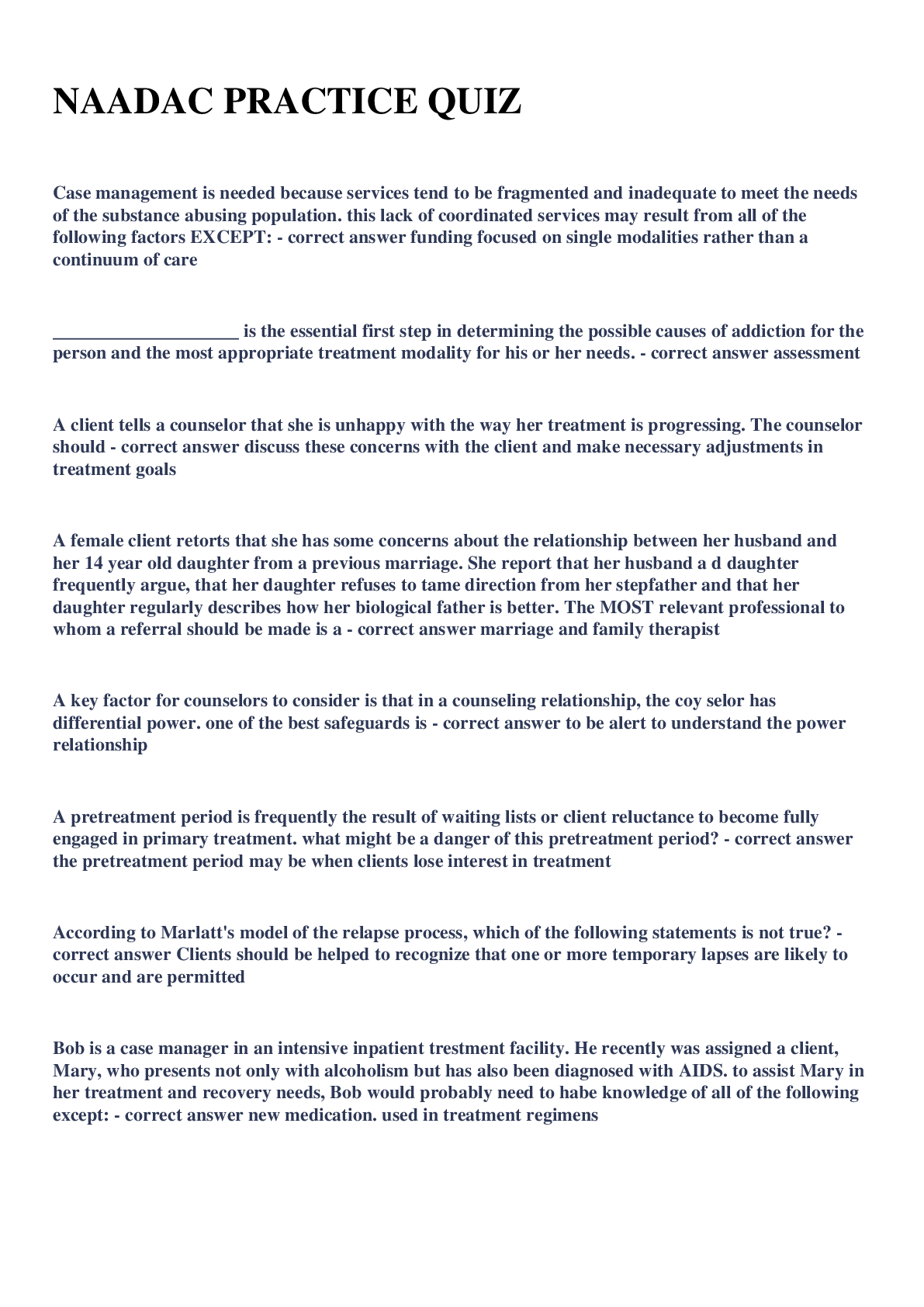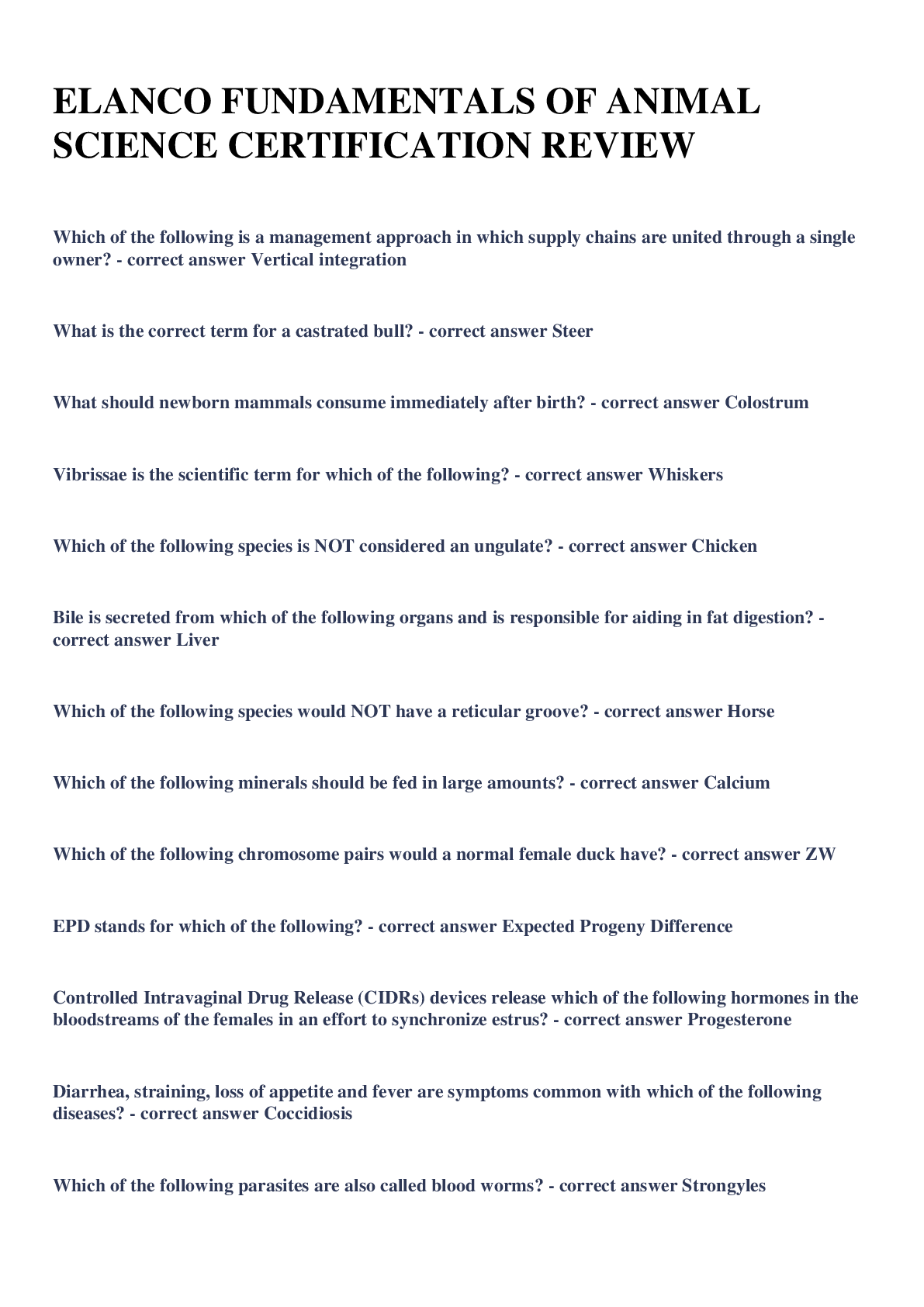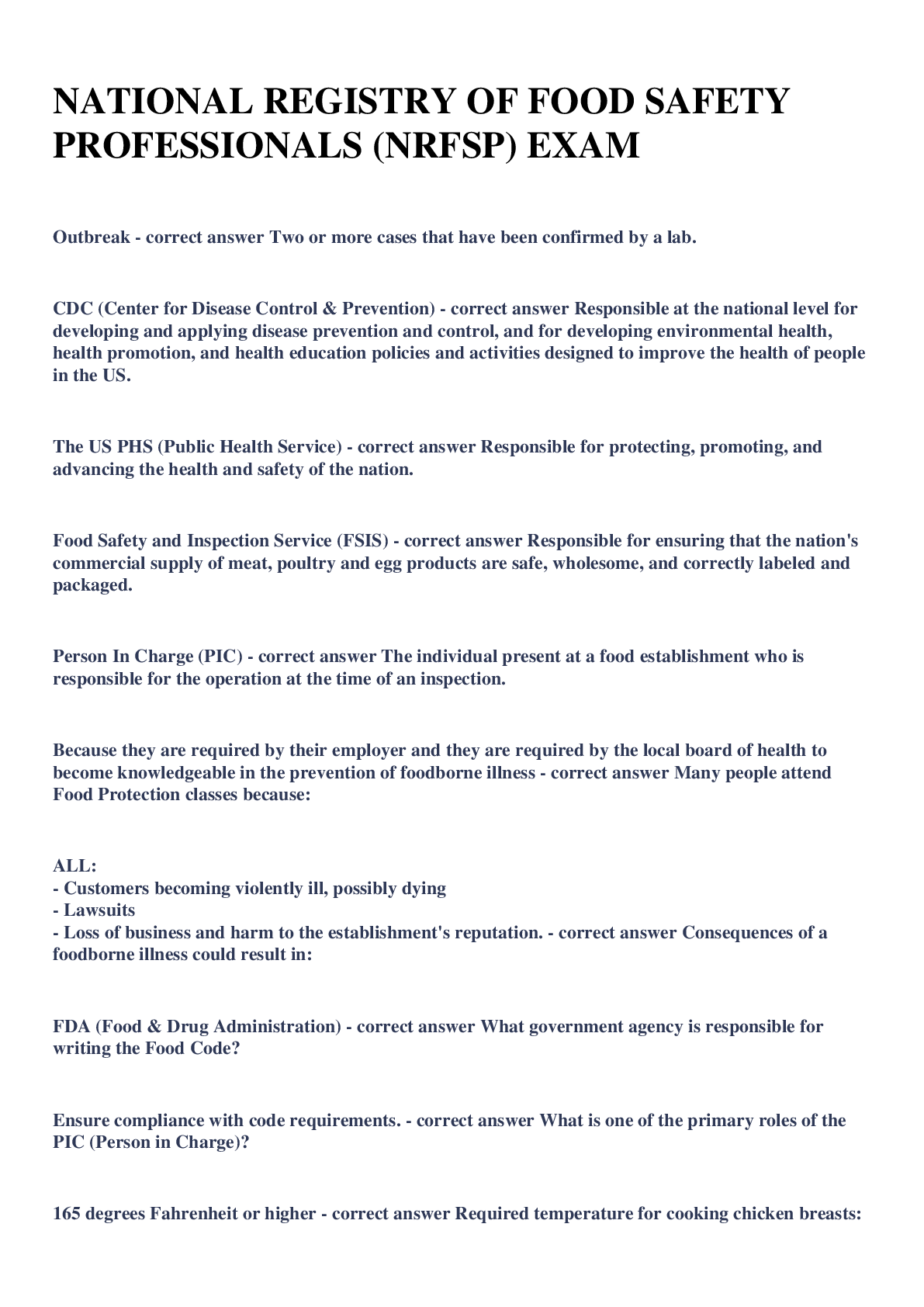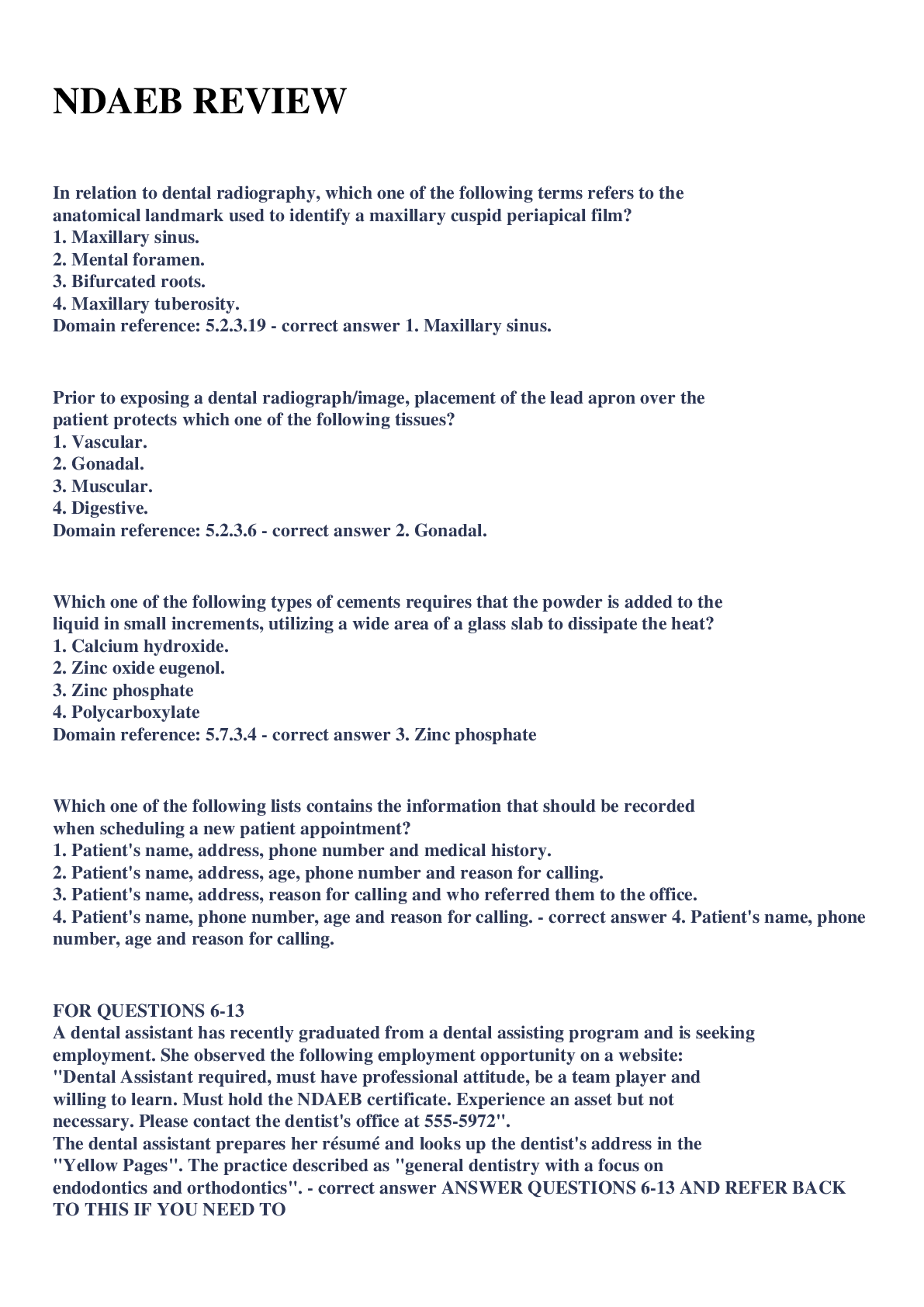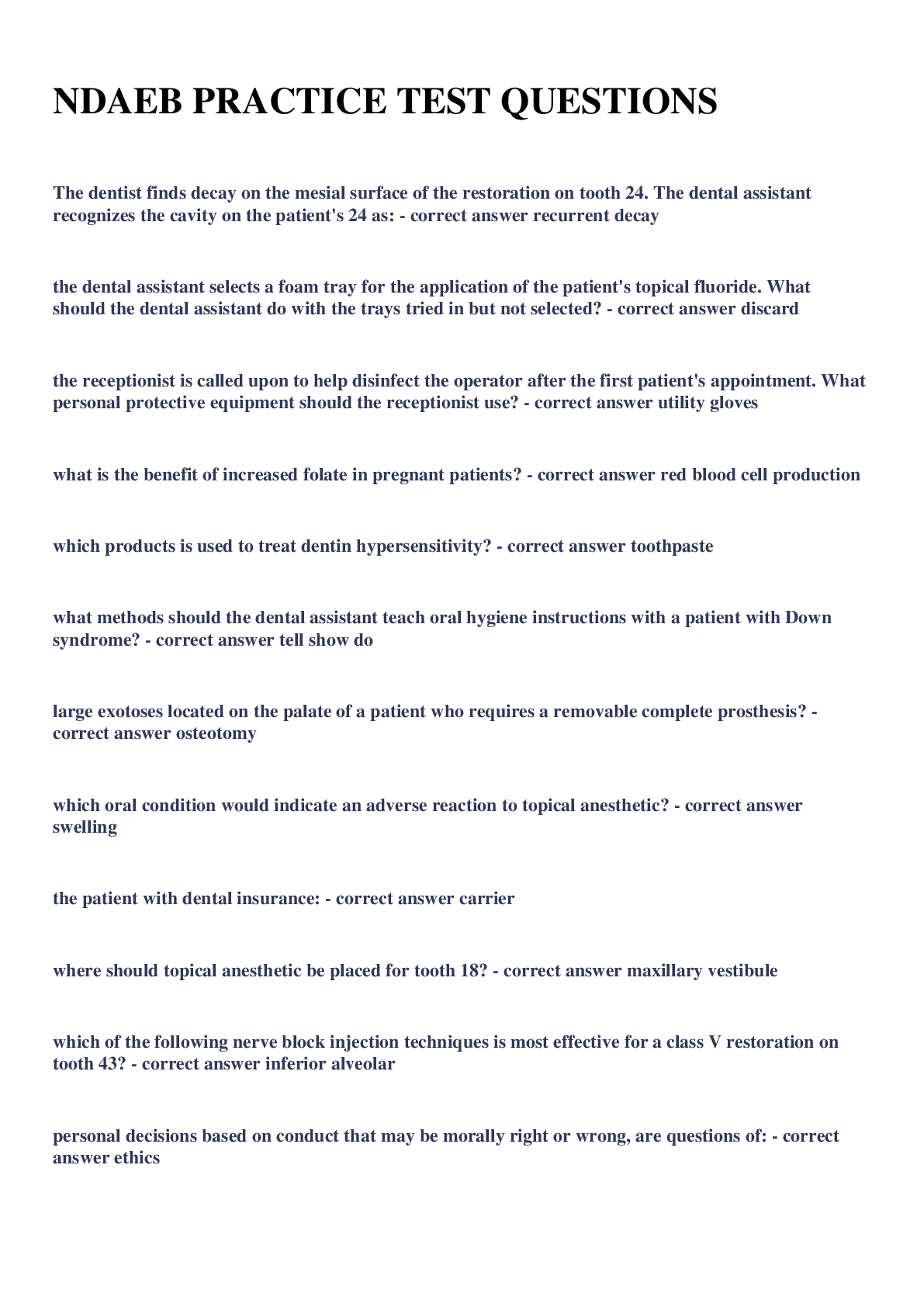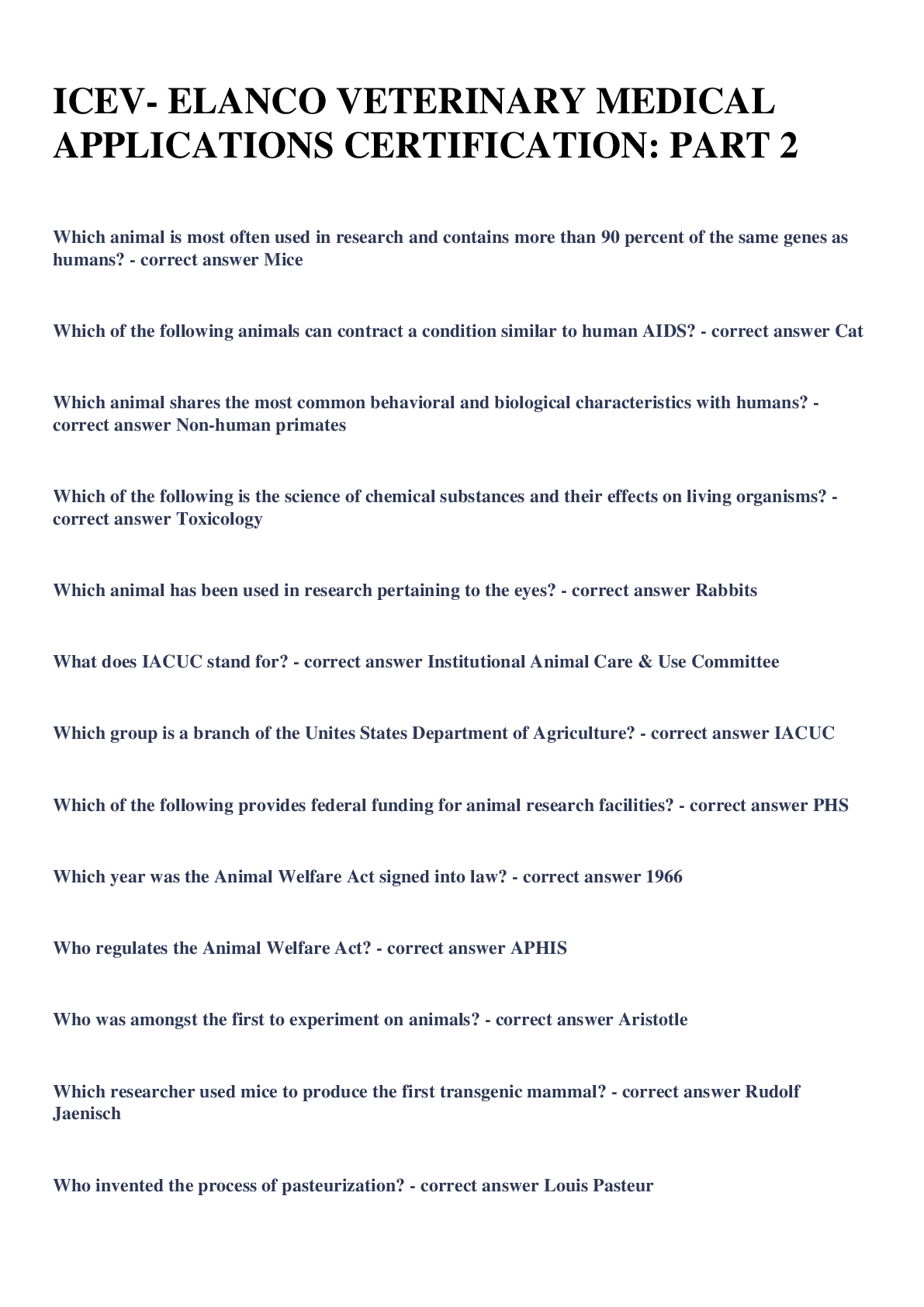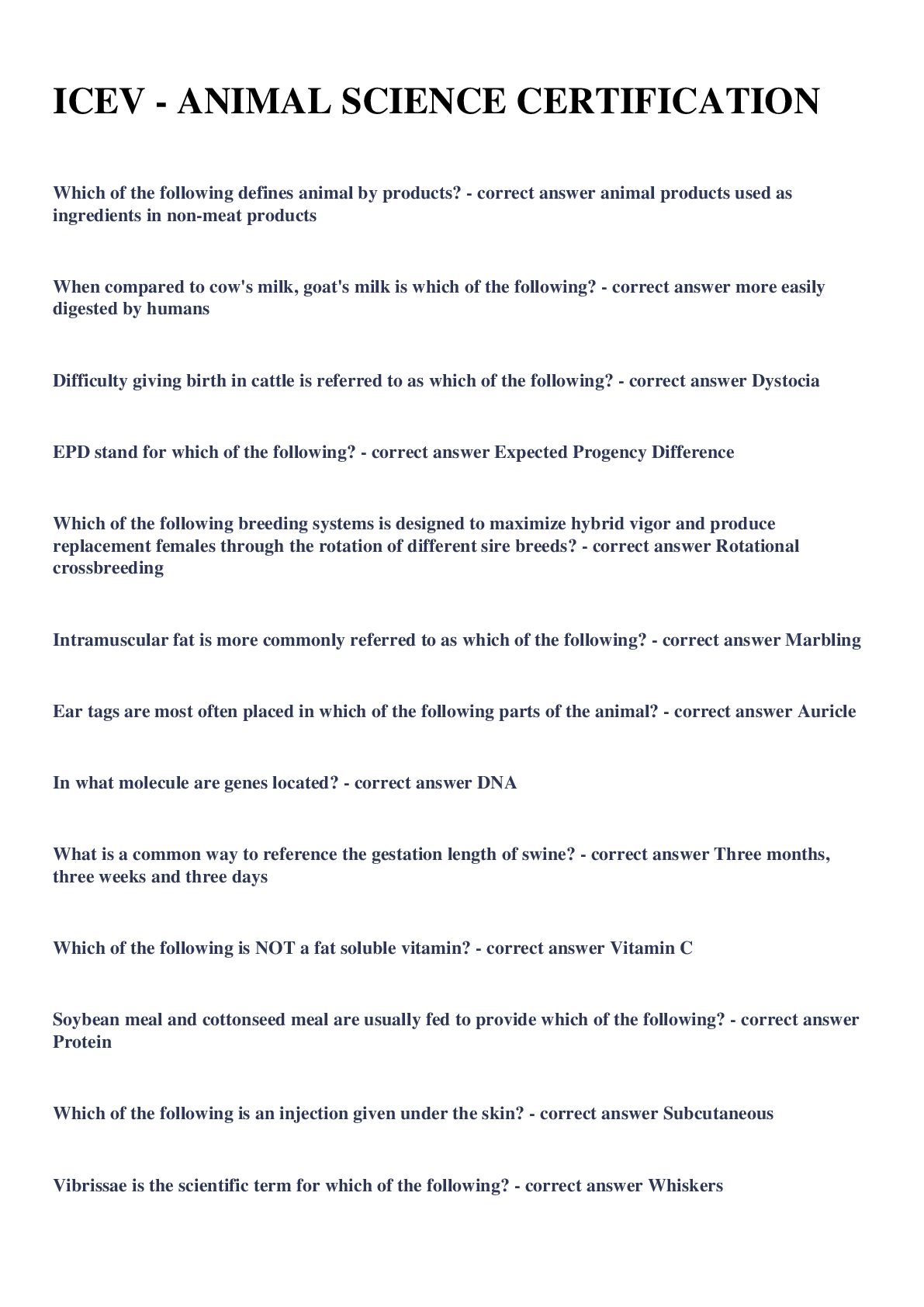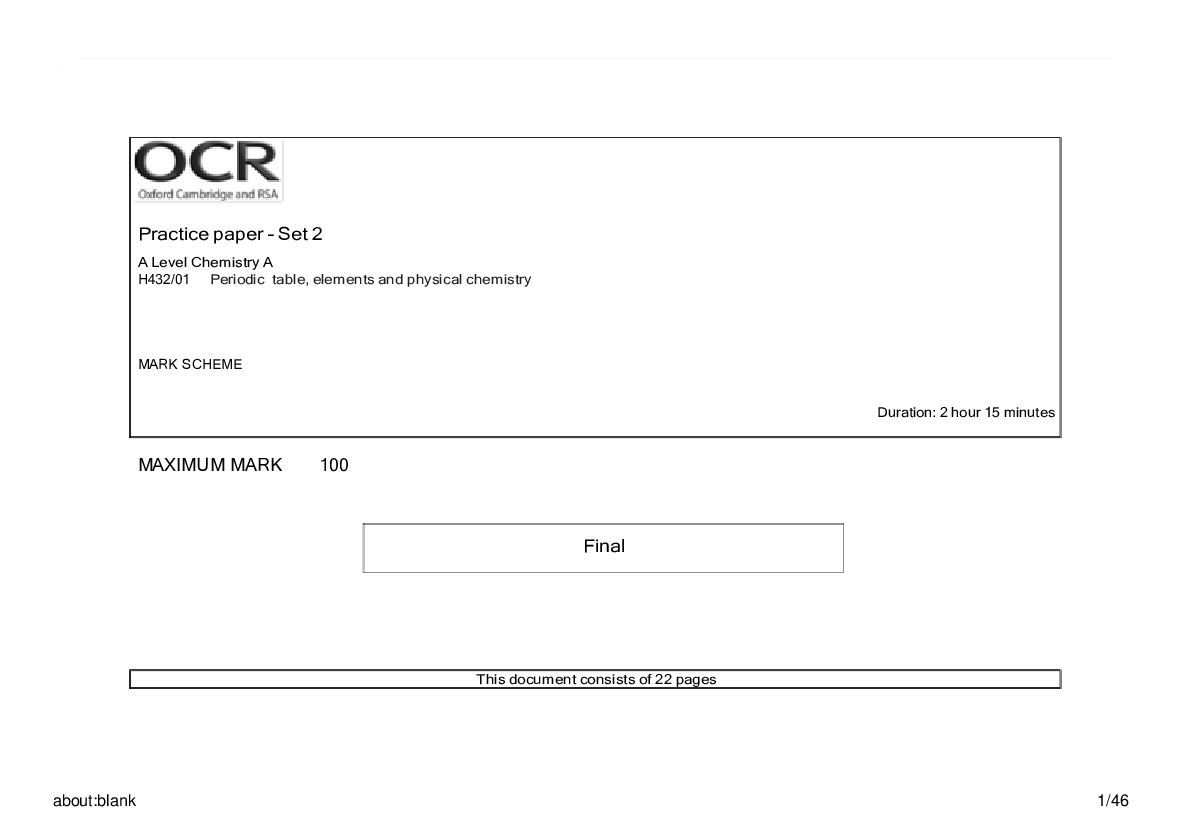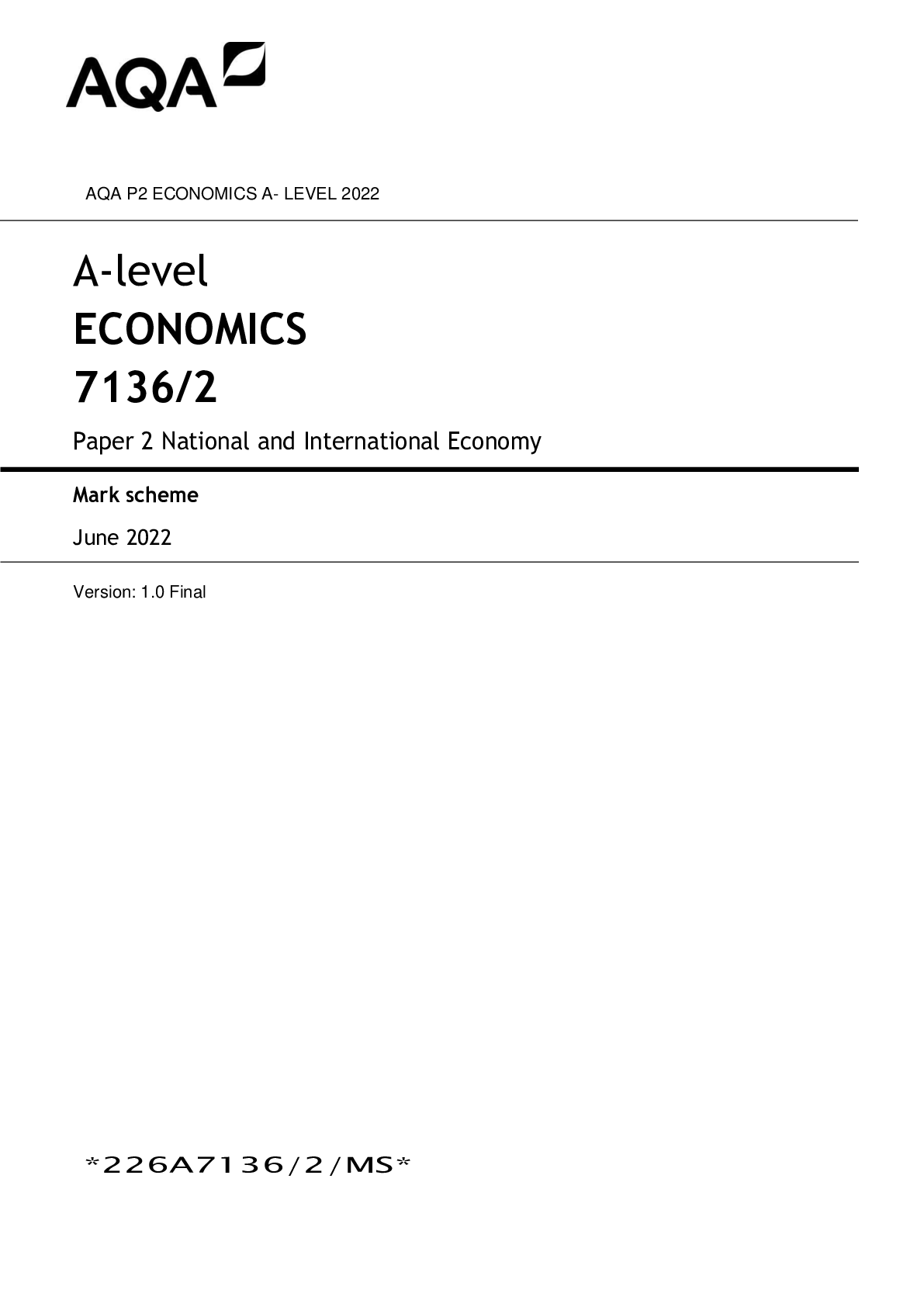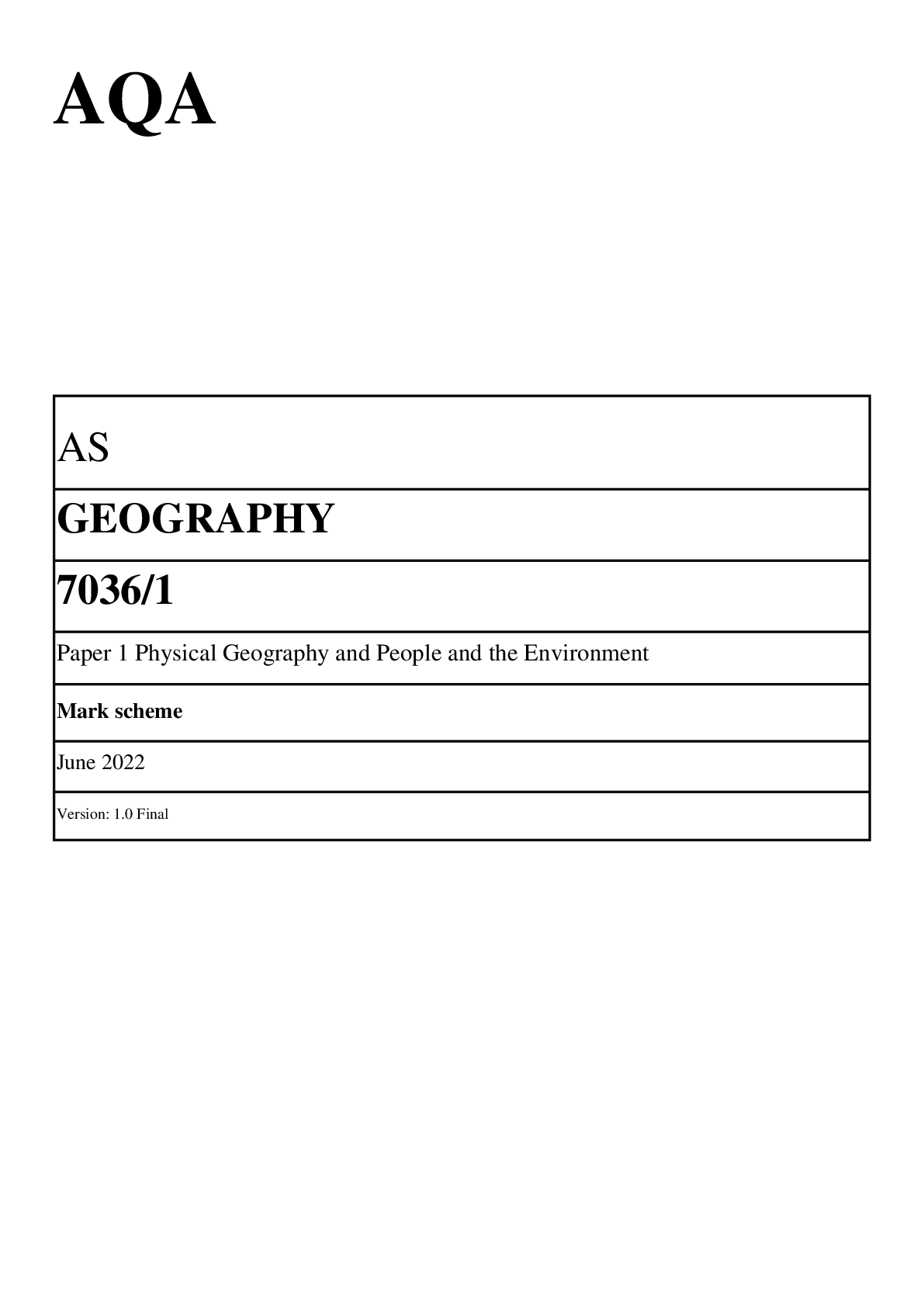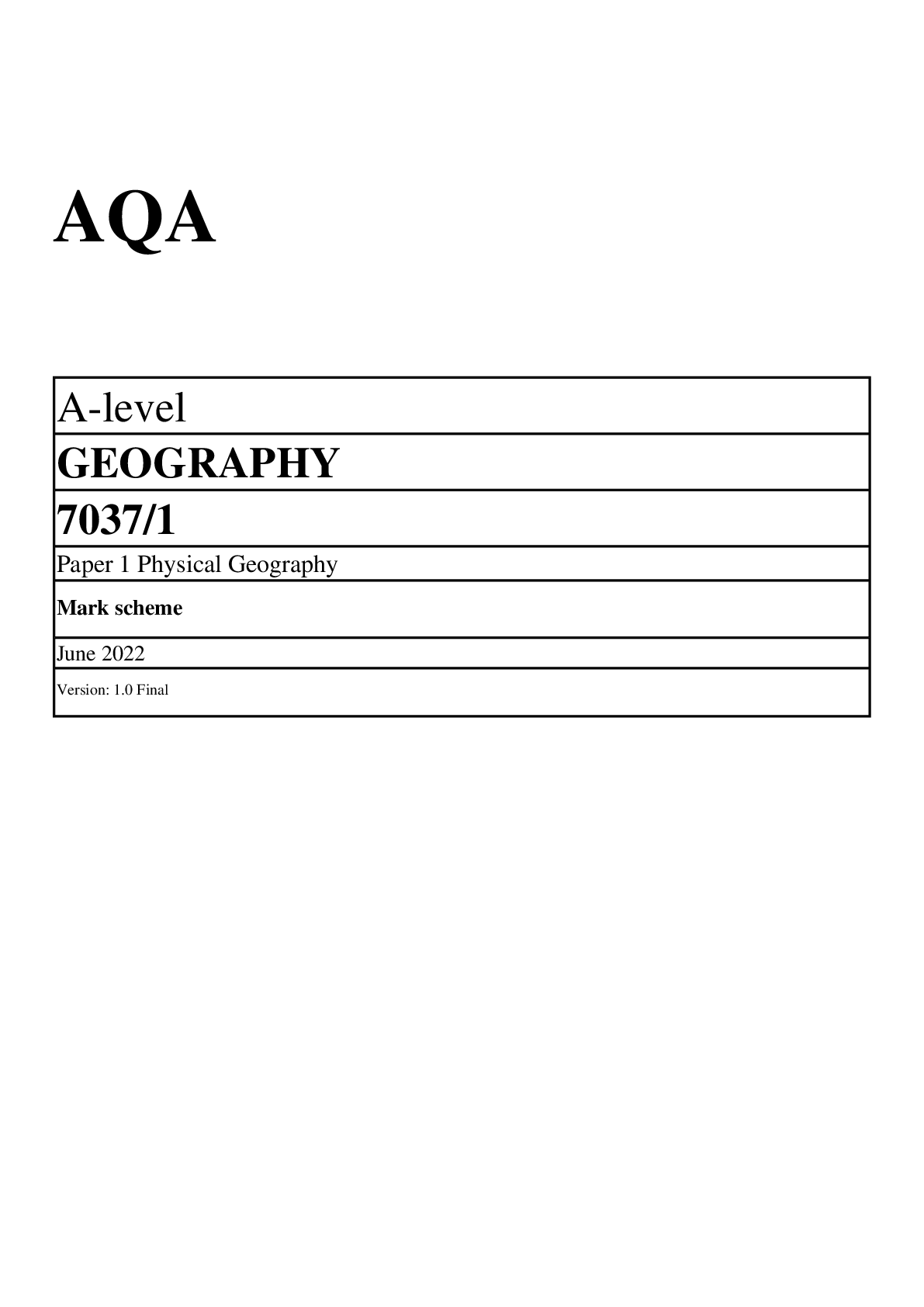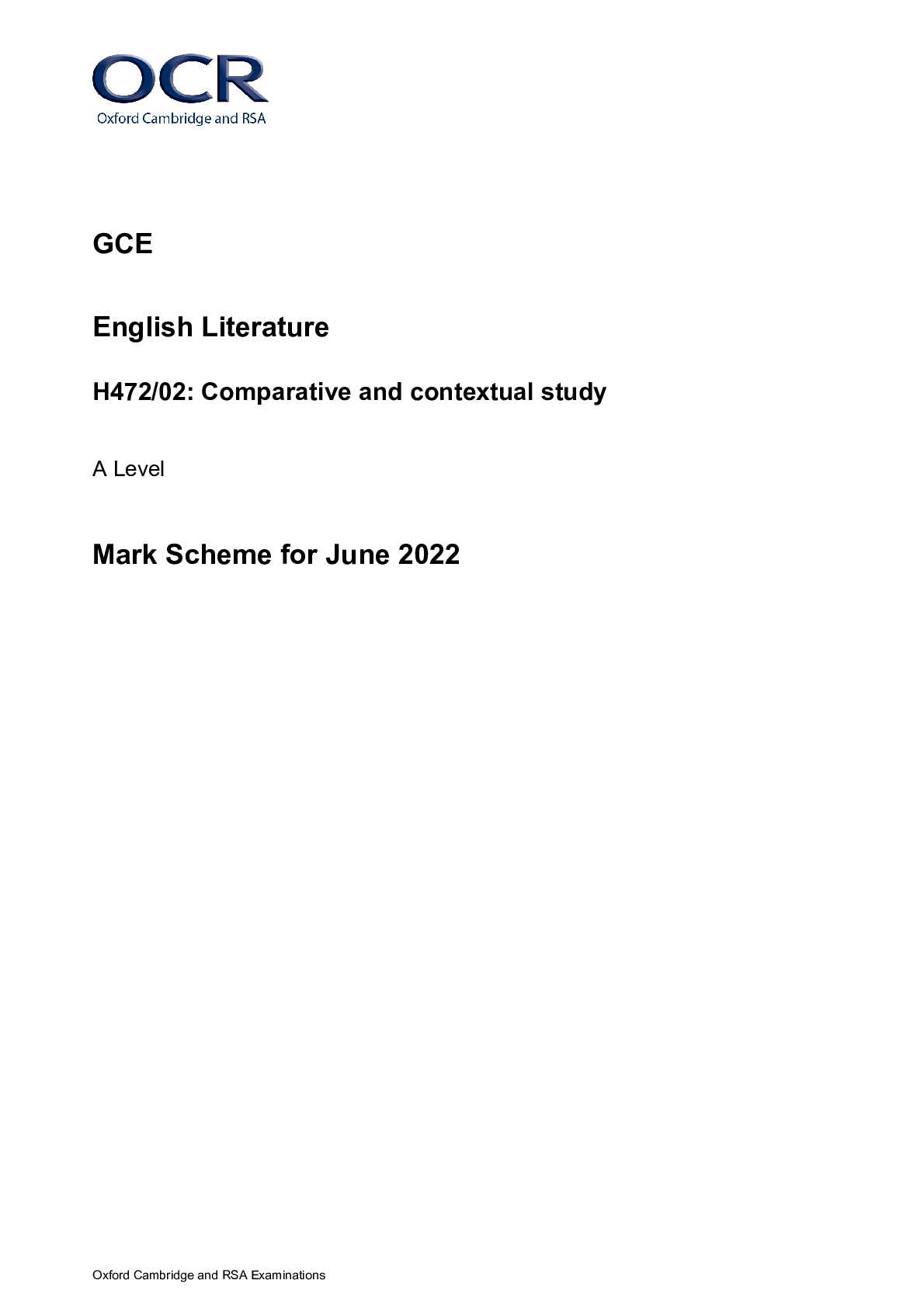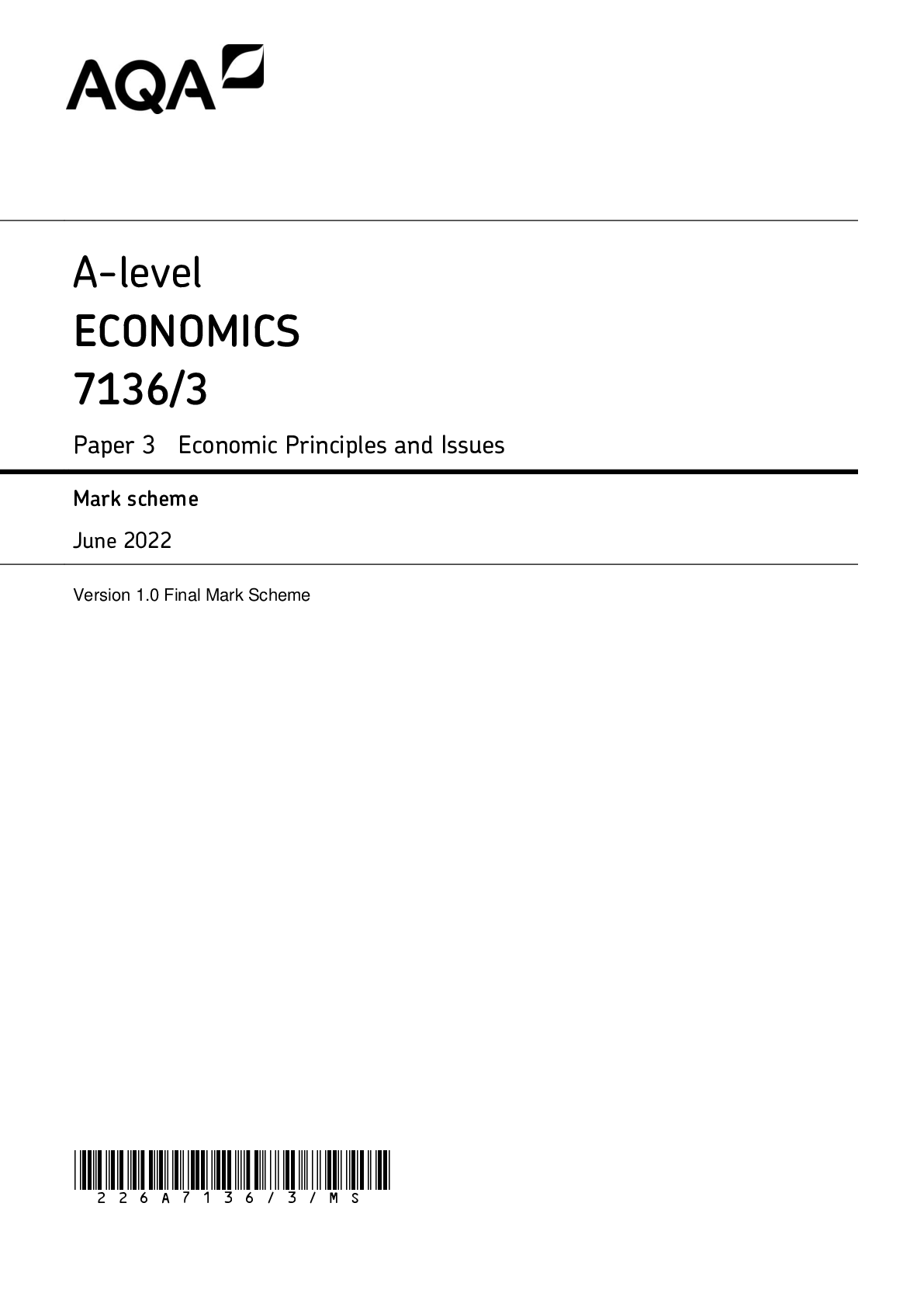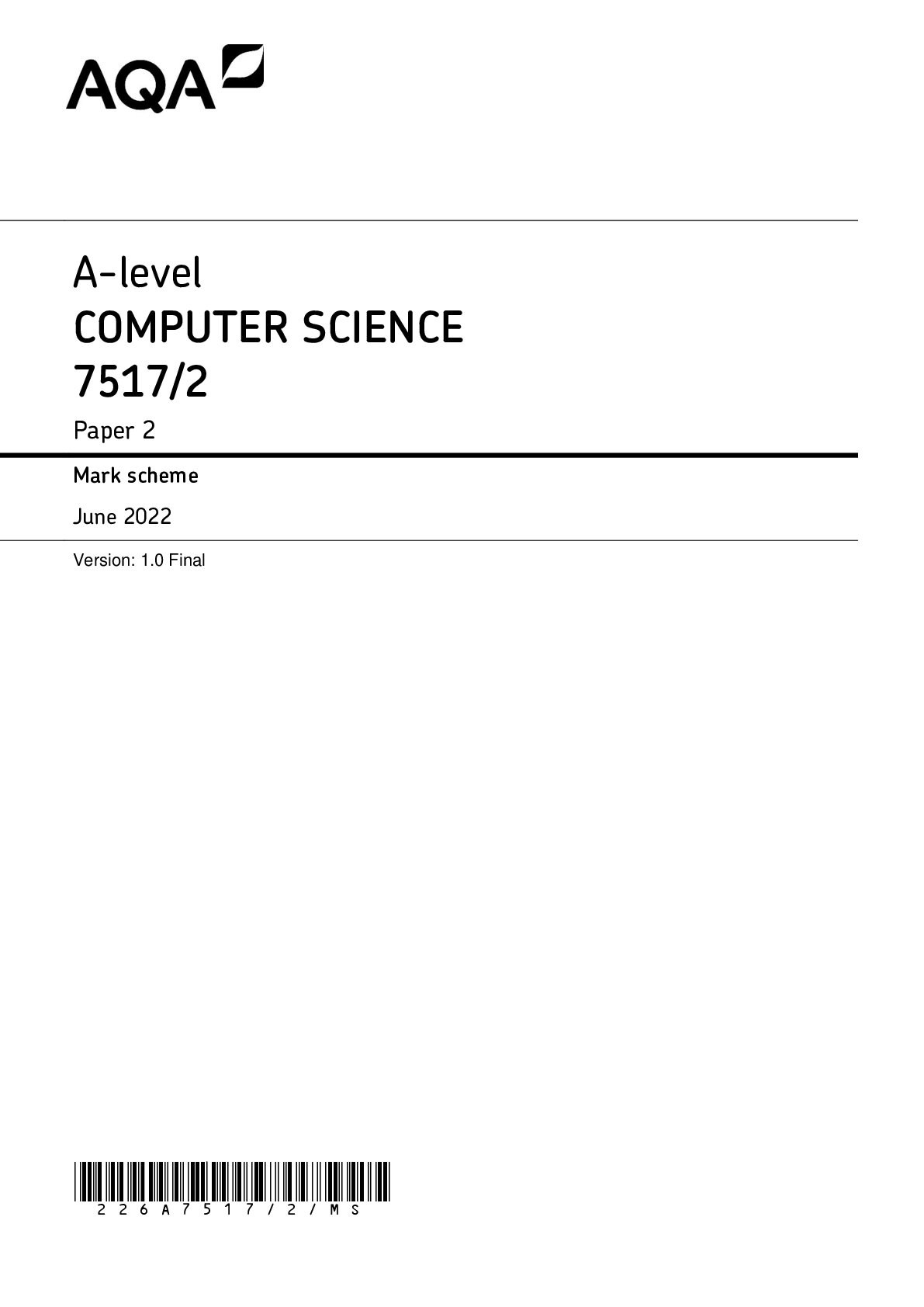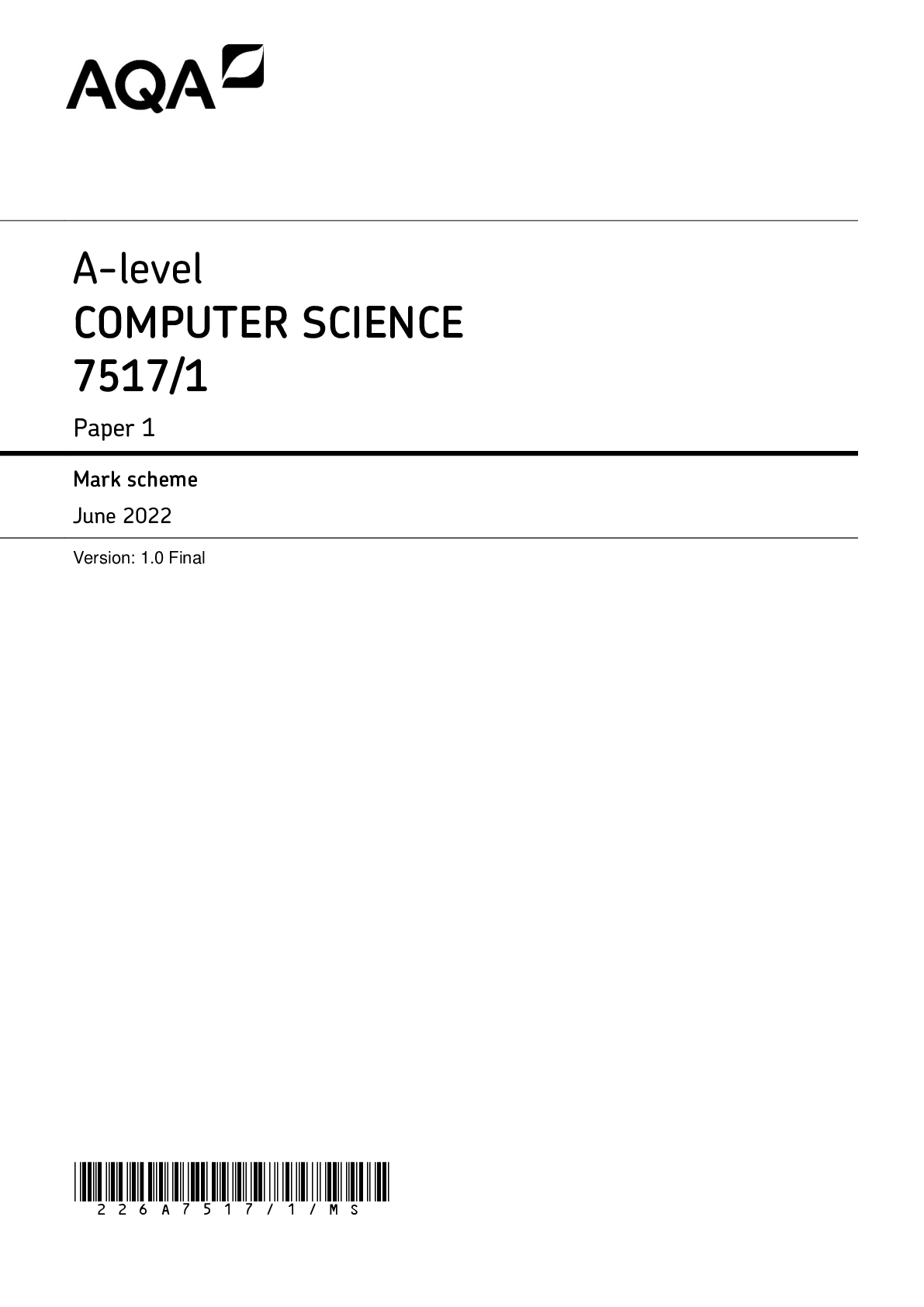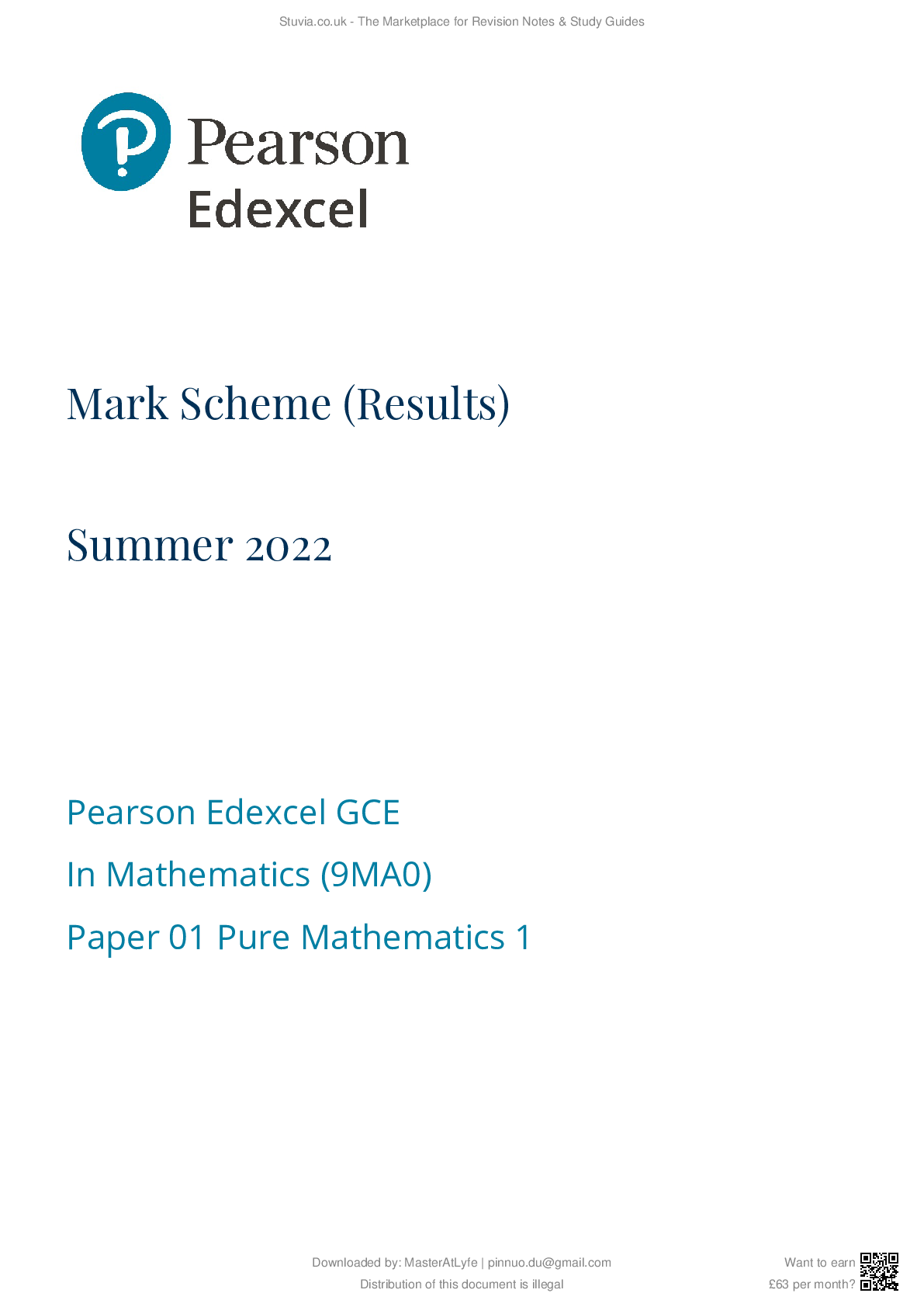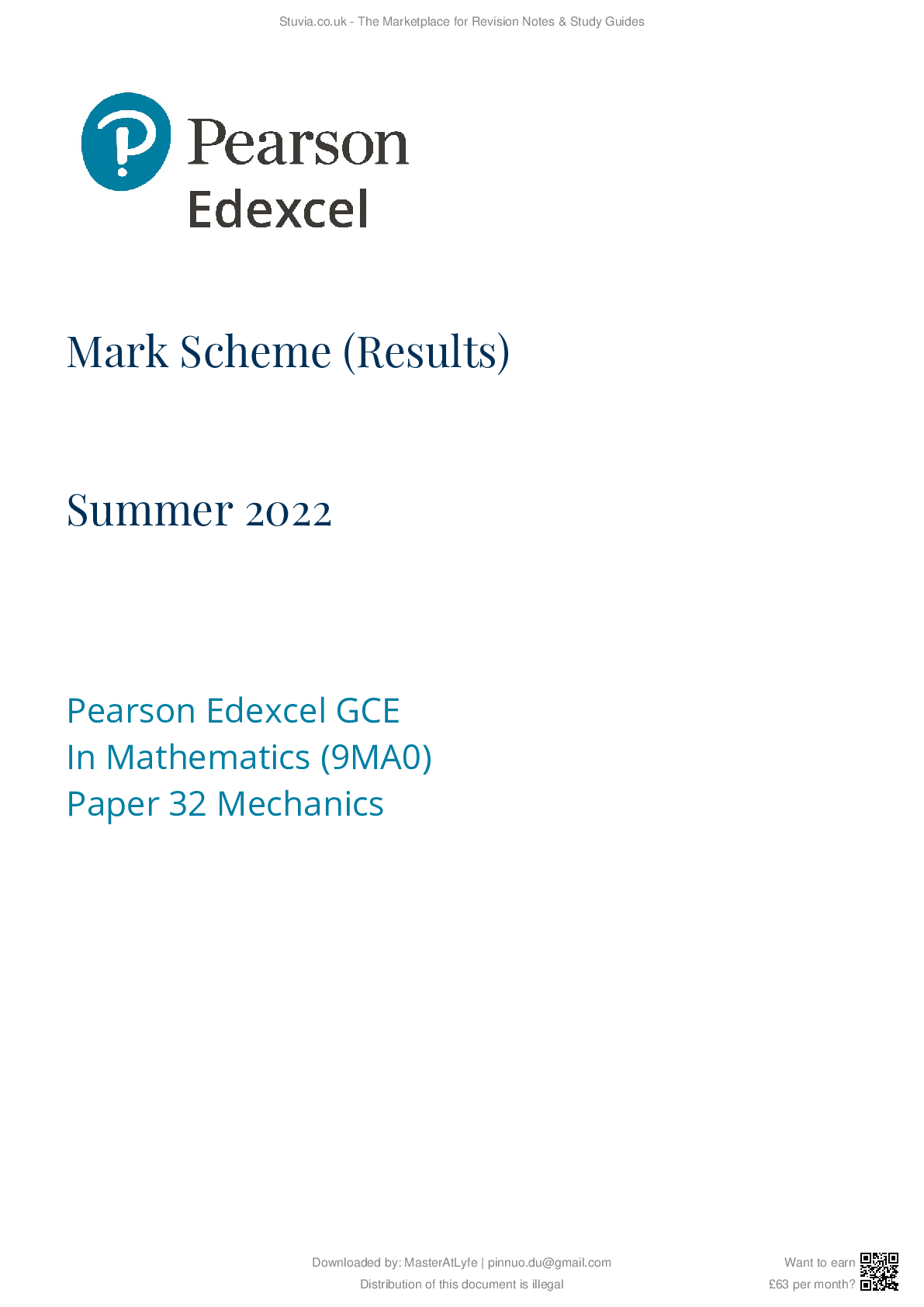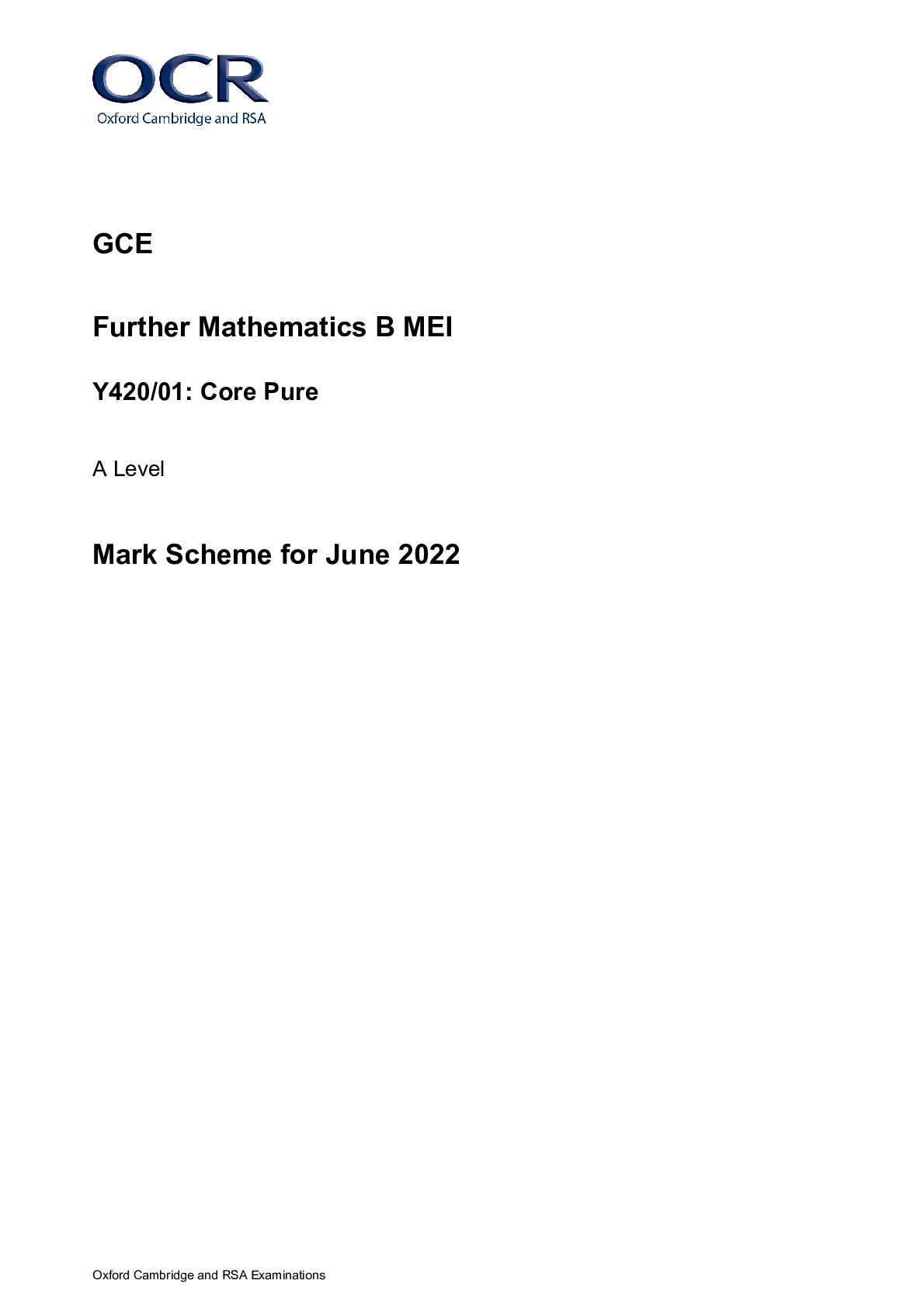*NURSING > A-Level Mark Scheme > NAADAC PRACTICE TEST 2 - UPDATED VERSION 2023 LATEST UPDATE (All)
NAADAC PRACTICE TEST 2 - UPDATED VERSION 2023 LATEST UPDATE
Document Content and Description Below
1) Quantity, frequency of use, patterns over time, and progression are necessary questions when taking the client's _______________. A. legal history B. medical history C. family history D. dru... g and alcohol history A. legal history B. medical history C. family history D. drug and alcohol history See page 42 of the study module two updated version 1) To identify those who have a condition related to a psychoactive substance use disorder 2) To assess the full range of difficulties currently experienced by the client. The addiction counselor or other helping professional should rate the symptom severity, diagnose evident mental health disorders and screen for related difficulties or challenges 3) To plan appropriate treatment interventions for the client 4) To involve the appropriate family members or significant others in the client's evaluation and treatment 5) To determine the methods for evaluating the effectiveness of the treatment interventions that will be implemented. 2) A good treatment plan generally consists of the following elements except _____________. A. problem statement B. goal statement C. measurable objectives D. consequences of relapse A. problem statement B. goal statement C. measurable objectives D. consequences of relapse See page 46 of the study module two updated version A, B and C are listed, not D The Need A Goal Statement Measurable Objective Strategies and Interventions 3) When working with a client who has relapsed, it is most important to __________________. A. discontinue treatment B. help the client identify his or her internal and external relapse triggers C. make sure the client understands the very serious consequences of using D. strongly confront the client on his or her behavior A. discontinue treatment B. help the client identify his or her internal and external relapse triggers C. make sure the client understands the very serious consequences of using D. strongly confront the client on his or her behavior See page 58 of the study module two updated version "The client requires a great deal of empathy and understanding after a relapse" Which is not C of D 4) The DAST is used to assess a client's __________________. A. progress during treatment B. mental health C. financial stability D. level of psychoactive substance abuse A. progress during treatment B. mental health C. financial stability D. level of psychoactive substance abuse See page 41 of the study module two updated version One example is the Drug Abuse Screening Test (DAST) Another tool is the Michigan Alcoholism Screening Test (MAST) 5) The two phase process by which a counselor forms a caring relationship with the client and begins gathering pertinent information about the client is known as ______. A. treatment planning B. followup C. evaluation D. intervention A. treatment planning B. followup C. evaluation D. intervention See page 40 of the study module two updated version 6) History of communication patterns and the generational history of addiction and mental health problems are associated with interview questions regarding __________________. A. drinking history B. drug history C. family history D. employment history A. drinking history B. drug history C. family history D. employment history See page 43 of the study module two updated version 7) Good interpersonal skills, limited confrontation, and the frequent use of empathy been empirically found to be characteristics of __________________. A. unsuccessful counseling B. adequate counseling C. enabling counseling D. effective counseling A. unsuccessful counseling B. adequate counseling C. enabling counseling D. effective counseling See page 84 of the study module two updated version These are all the traits listed in this section 8) An _______________ differs from a listening response in that it deals with the implicit part. A. interpretation B. action response C. empathic response D. integration A. interpretation B. action response C. empathic response D. integration See page 87 of the study module two updated version 9) In motivational interviewing, the "A" in the acronym OARS stands for __________________. A. ask B. assess C. affirm D. action A. ask B. assess C. affirm D. action See page 59 of the study module two updated version OARS Open Questions Affirmation Reflective Listening Summary Reflections Open questions, affirmation, reflective listening, and summary reflections (OARS) are the basic interaction techniques and skills that are used "early and often" in the motivational interviewing approach. https://www.google.com/search?q=oars+questioning&oq=oars+questioning&aqs=chrome..69i57.4614j1j7&sourceid=chrome&ie=UTF-8 [Show More]
Last updated: 8 months ago
Preview 1 out of 30 pages
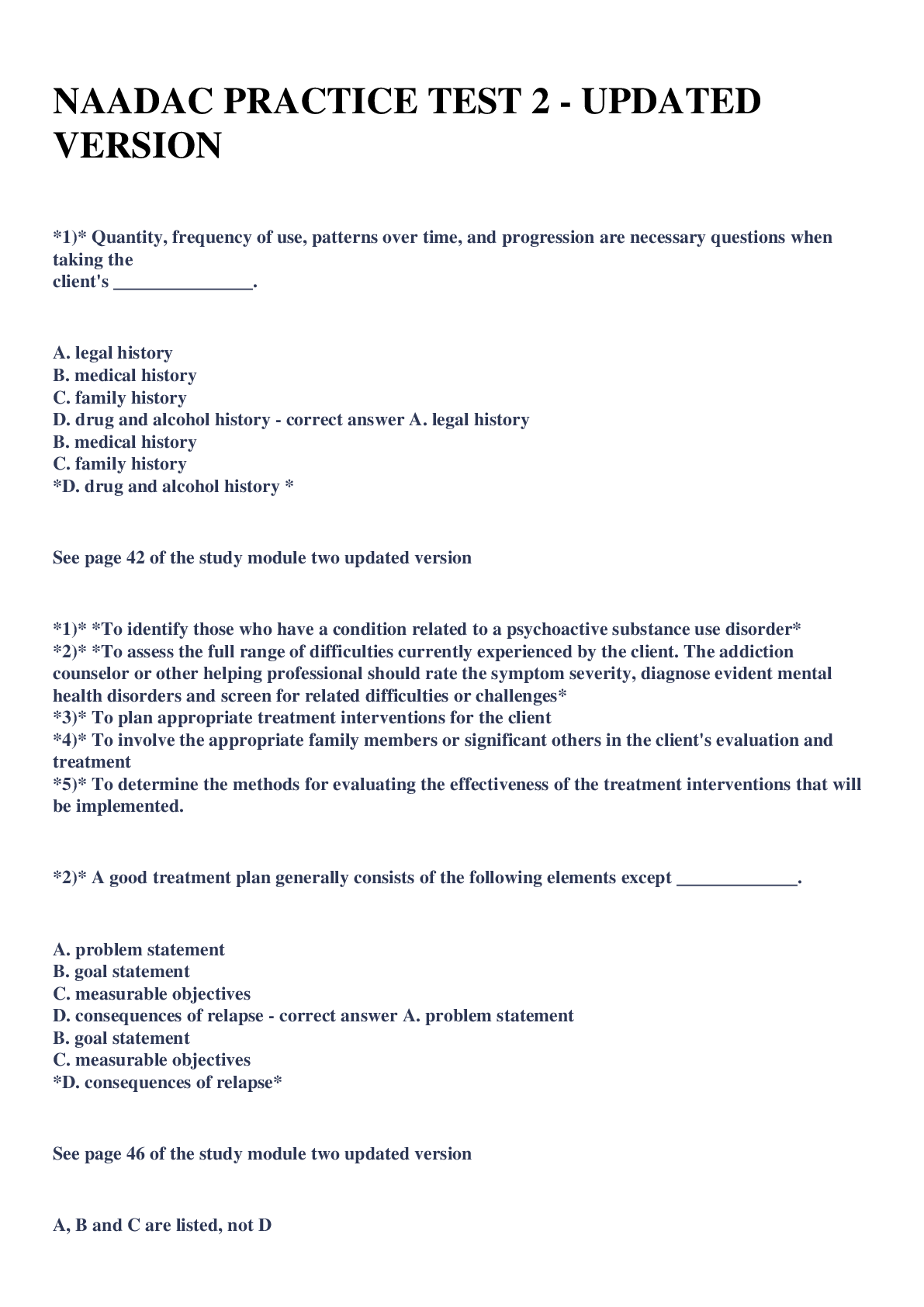
Reviews( 0 )
Document information
Connected school, study & course
About the document
Uploaded On
Aug 18, 2023
Number of pages
30
Written in
Additional information
This document has been written for:
Uploaded
Aug 18, 2023
Downloads
0
Views
32




